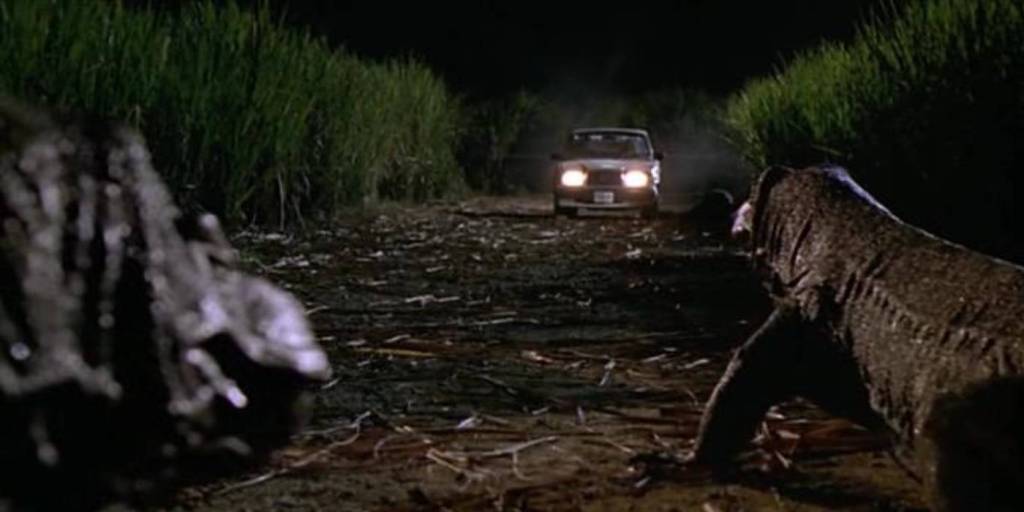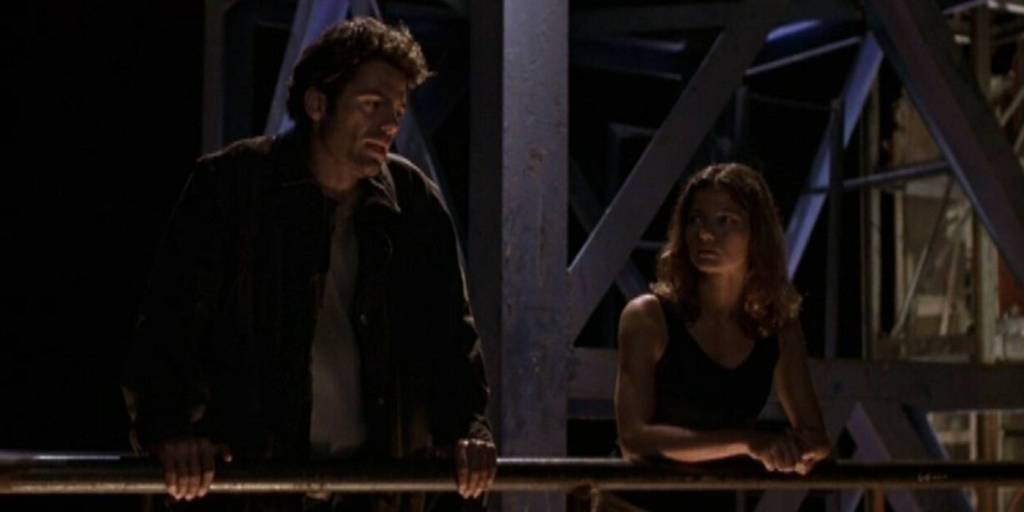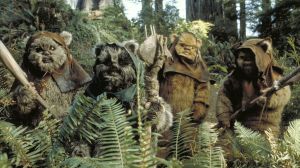Jurassic Park has set the standard for movies about islands full of killer reptiles, and the 1999 horror movie Komodo is among the few to follow in its footsteps so splendidly. Directed by Jurassic Park visual effects artist Michael Lantieri in his directorial debut, Komodo focuses on Patrick (Kevin Zegers), a teenager whose family and dog are killed during a summer time trip to Emerald Isle, North Carolina. His therapist Victoria (Jill Hennessy) elects to take Patrick back to the island to face his fears, only for them to encounter his family’s killers – a group of Komodo dragons dropped on the island 19 years earlier and covered up by the oil company operating on the island.
Videos by ComicBook.com
Komodo released on home video to little mainstream recognition in 1999, and it’s easy to see the Jurassic Park influence on the movie. However, that’s also one of the highest compliments that can be paid to Komodo. With a similar plot template to Jurassic Park and a fraction of its resources, Komodo has aged very well as a very effective monster movie primed for a rediscovery renaissance in the streaming age.
Komodo Is A Surprisingly Intense & Scary Monster Movie

It isn’t uncommon for horror movies that either carry a PG-13 rating or a straight-to-video label to be written off sight unseen by horror fans, and yet Komodo, bearing both distinctions, fully delivers as a genuinely scary horror movie creature feature. The premise of Komodo works in much the same way as that of Jurassic Park, both movies predicated upon a small group of human survivors trapped on an island full of predatory, carnivorous reptiles. Like Jurassic Park, Komodo really drives home the sense of isolation and threats lurking around every corner to work as a no-holds-barred monster movie. What also works in Komodo‘s favor is how much it goes for the jugular just like its titular reptiles.
Komodo is the kind of PG-13 horror movie that was clearly made to tip-toe within one centimeter of an R-rating, and doing so was a very wise decision on the part of Michael Lantieri and the production team. The movie’s Komodo dragons are genuinely frightening killing machines, while the movie’s human characters who meet their end at the claws of the Komodos all die horrific, bloody deaths. Purely on the basis on how much mileage it gets from its hard PG-13 rating and how terrifying the Komodos themselves are, Komodo is a real diamond in the rough for its time as a straight-to-video PG-13 horror movie.
RELATED: Jurassic Park Fans Are Still Confused by This Line Over 30 Years Later
Komodo Makes Viewers Care About Its Main Characters

Far from being a mere carnage fest, Komodo also makes its human protagonists into fully three-dimensional characters that viewers develop real sympathy for and a rooting interest in their survival. The killing of Patrick’s parents and dog by the Komodos leaves him wracked with both PTSD and guilt, while Victoria’s efforts to help him overcome his trauma leaves her with her own burden of guilt that she may have simply added to Patrick’s pain (along with Victoria holding herself responsible for Patrick’s aunt Annie being killed by one of the Komodos after their arrival on the islad.) The biggest human interest story in Komodo is that of mysterious biologist Oates (Billy Burke), who along with his partner Denby (Paul Gleeson) is tasked with wiping out the Komodos by the oil company that has been operating on Emerald Isle.
Once employed by the company alongside his geologist wife, Oates was wrongfully accused of killing his wife after she disappeared on the island (presumably being killed by the Komodos.) With Oates’ prospects at his impending trial looking grim, he was then offered “a passport, some money, and a boat” by the oil company’s CEO Bracken (Simon Westaway) to wipe out the Komodos in order to keep the company’s knowledge of the presence of the endangered species on the island a secret from the public, along with their culpability in the human casualties the Komodos have inflicted (as Oates puts it, “They’re starving. The drilling poisoned the environment, they’ve got nothing to eat. Well, until you people showed up.”)
Alongside its thrills and chills as a horror movie, Komodo almost plays a Greek tragedy in what Patrick, Victoria, and Oates experience, and their helicopter escape from Emerald Isle is a far less triumphant survival story than Jurassic Park‘s ending. After making it back to the mainland, all the three survivors can do is aimlessly wander the streets of the coastal town overwhelmed with their brush with death and the friends and family they’ve all lost. Additionally, Oates is still a fugitive, forced to hide behind a pair of sunglasses as the town’s sheriff pulls up to ask if they’re okay. Even as Patrick replies “Never better”, the melancholy heavy metal guitar theme and view of the ocean that Komodo ends on shows how deeply the experience has affected each of them. For a low-budget monster movie, Komodo is a model of making its human characters into fully flesh-and-blood people that the viewer is both glad to see survive along with wondering what the uncertain future holds for each of them, especially the still wrongly accused Oates.
Komodo Overall Looks Very Big Screen Worthy

The real kicker for Komodo‘s surprising strength as a horror movie is just how much it equals it horror movie contemporaries on the big-screen. In the modern age of streaming and social media, it’s hardly unexpected to see straight-to-video or streaming movies with great production values and theatrical level sense of scope and scale. Indeed, in some ways, it’s become increasingly arguable that the straight-to-video/streaming scene has equaled and even surpassed bigger budget theatrical releases, especially in the action and horror genres. However, straight-to-video was still far more of a pejorative in the late ’90s and early 2000’s, which makes Komodo all the more impressive.
While clearly still produced on a far lower budget than Jurassic Park, Komodo hides its limitations well with phenomenal puppetry, animatronics, and CGI work on the Komodos to make them fully convincing movie monsters. Additionally, Michael Lantieri knows how to use the minimalism of the movie’s island setting to his advantage, utilizing the environment itself and what houses, outposts, and power plants are available for very effective set pieces when the Komodos attack. It may be commonplace in the modern age to see the likes of the Tremors, Wrong Turn, and Skyline franchises deliver big budget-level action and horror for a tenth of the big screen price tag, and in that respect, Komodo was well ahead of the game in pulling off the same trick.
Komodo might not have shattered box office records like the Jurassic Park franchise regularly does, but under the direction of one of its key visual effects artists, Komodo learned all the right lessons from Jurassic Park‘s example and stands as a worthy little brother of the straight-to-video realm. 26 years after its debut, Komodo is a shining example of how to deliver maximum scares and monster action topped off with a compelling story and fully developed human characters, all on a low budget and a PG-13 rating that it knows how to get the best of both from.
Komodo is available to rent on Amazon Video.








